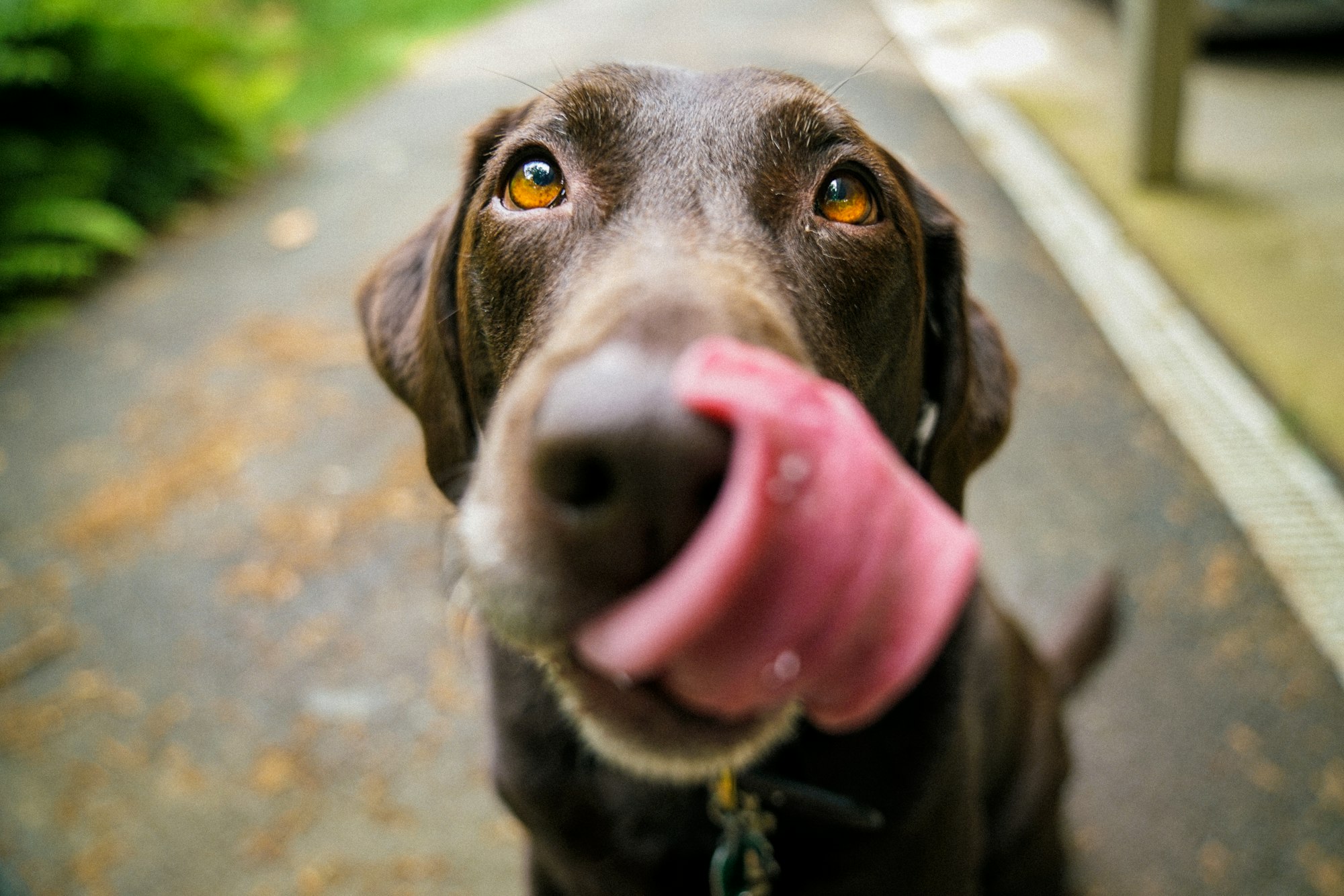Owning a dog comes with the responsibility of ensuring their well-being and health. However, accidents can happen, and one common injury that dogs might experience is a broken toe. A broken toe can be painful and debilitating for our furry friends, and as pet owners, it's essential to be aware of the causes, symptoms, treatment, and recovery process associated with this type of injury.

What is a Broken Toe in Dogs?
A broken toe, also known as a toe fracture, is a common injury that dogs can experience. It occurs when one or more of the bones in a dog's toe are cracked or broken. This injury can be caused by various factors and may result in significant pain and discomfort for the dog.
Causes of Broken Toes in Dogs
Broken toes in dogs can occur due to various factors, and understanding the common causes can help pet owners take preventive measures. Some of the main causes include:
1. Accidental Trauma: Dogs are curious and energetic creatures, often engaging in activities that put them at risk of accidental trauma. Jumping from heights, running into obstacles, or getting their paws caught in doors can lead to toe injuries.
2. Sports and Play Injuries: Sporting and active dogs involved in rigorous activities or rough play may experience toe fractures due to sudden stops, turns, or collisions.
3. Falls: Dogs can slip or fall on slippery surfaces, leading to fractures in their toes.
4. Stepping on Sharp Objects: If a dog steps on a sharp object, such as a broken glass or a sharp stone, it can result in a broken toe.
5. Degenerative Conditions: Older dogs or those with degenerative conditions like osteoarthritis may have weaker bones, making them more susceptible to toe fractures.
6. Metabolic Disorders: Certain metabolic disorders can weaken a dog's bones, increasing the risk of fractures from minimal trauma.
7. Accidental Crushing: Dogs' toes can get accidentally crushed, for example, when a heavy object falls on them.
Symptoms of a Broken Toe
Identifying the signs of a broken toe in dogs is vital for prompt treatment and relief of discomfort. Look out for the following symptoms:
1. Limping or Favoring the Paw: Dogs with a broken toe may limp or avoid putting weight on the injured paw.
2. Swelling and Bruising: The injured toe may appear swollen and bruised, indicating internal bleeding and tissue damage.
3. Pain and Sensitivity: Your dog may exhibit signs of pain when you touch or manipulate the affected toe.
4. Reluctance to Move: Dogs with toe fractures may be hesitant to move or play due to the discomfort.
5. Change in Behavior: A normally active and playful happy dog may become lethargic or irritable when experiencing pain from a broken toe.
6. Licking or Chewing: Dogs may excessively lick or chew the injured toe in an attempt to alleviate the pain.
7. Visible Deformity: In some cases, a visibly misaligned or crooked toe may indicate a fracture.
If you notice any of these symptoms or suspect that your dog has a broken toe, it's essential to seek veterinary care immediately. The veterinarian will perform a thorough examination and recommend appropriate treatment based on the severity of the injury. Early intervention can promote faster healing and reduce the risk of complications.

Diagnosis of a Broken Toe
If you suspect that your dog has a broken toe, it's crucial to seek veterinary care for a proper diagnosis. The veterinarian will perform a thorough physical examination, which may include the following steps:
1. Visual Inspection: The vet will visually assess the injured paw, looking for signs of swelling, bruising, or visible deformities in the toe.
2. Palpation: Gentle palpation of the toe and surrounding area will help the vet identify areas of tenderness or pain.
3. Range of Motion Test: The veterinarian may gently move the toe to check for any limitations in range of motion, which can indicate a fracture.
4. X-rays: In many cases, the veterinarian will take X-rays of the injured toe to get a detailed view of the bones and confirm the presence and severity of the fracture.
Based on the findings from the examination and X-rays, the vet will be able to determine the exact location and type of fracture, which will guide the appropriate treatment plan.
First Aid of Broken Toe in Dogs
While immediate veterinary care is essential for a broken toe, providing some basic First aid can help alleviate discomfort and prevent further injury until you can get your dog to the vet. Here are the steps you can take as first aid:
1. Keep Your Dog Calm: Encourage your dog to stay calm and avoid putting weight on the injured paw to prevent further damage.
2. Immobilization: If possible, immobilize the injured toe by gently splinting it with a clean and padded material. This can help keep the toe stable and reduce pain during transport.
3. Cold Compress: Applying a cold compress or an ice pack wrapped in a cloth to the injured area can help reduce swelling and alleviate pain. Be sure not to apply the ice directly to the skin.
4. Protect the Paw: To avoid further injury, wrap the injured paw in a clean bandage or cloth to shield it from potential hazards.
5. Avoid Medication: While it might be tempting to give your dog over-the-counter pain medications, avoid doing so without consulting a veterinarian. Some medications can be harmful to dogs and may interfere with the diagnosis.

Remember that first aid is a temporary measure and not a substitute for proper veterinary care. It's essential to get your dog to the vet as soon as possible for a thorough evaluation and appropriate treatment.
By following these steps and seeking professional veterinary care promptly, you can ensure that your furry companion receives the best possible care and support for their broken toe, leading to a smoother and faster recovery.
Treatment Options for Broken Toe
The appropriate treatment for a broken toe depends on the severity of the fracture and the dog's overall health. The three main treatment options are:
1. Conservative Management
For minor fractures, the veterinarian may recommend conservative management, which involves rest and restricted activity to allow the toe to heal naturally.
2. Splinting the Toe
In some cases, the broken toe may be splinted to keep it in the correct position while it heals.
3. Surgery
Severe fractures or cases where the bones are misaligned may require surgical intervention to realign and stabilize the toe.
Recovery Process
The recovery process for a broken toe in dogs can vary depending on the severity of the fracture and the treatment provided. Here's what you can expect during your dog's recovery:
1. Rest and Immobilization: During the initial phase of recovery, your dog will need plenty of rest to allow the fractured toe to heal properly. Depending on the severity of the fracture, the veterinarian may recommend immobilizing the toe with a splint or bandage.
2. Medication: Your vet may prescribe pain medication or anti-inflammatory drugs to help manage your dog's pain and reduce swelling during the healing process.
3. Follow the Vet's Instructions: It's crucial to follow the veterinarian's instructions carefully. This may include limiting your dog's activity, avoiding walks and strenuous exercise, and keeping the bandage or splint clean and dry.
4. Physical Therapy: In some cases, your veterinarian may recommend physical therapy to aid in the recovery process. Physical therapy exercises can help strengthen the muscles around the injured toe and improve mobility.
5. Monitoring Progress: Regular follow-up visits to the vet are essential to monitor your dog's progress and ensure that the fracture is healing correctly. X-rays may be taken during these visits to assess the healing process.
6. Gradual Return to Normal Activities: As the fractured toe heals and your dog's condition improves, your vet will guide gradually reintroducing normal activities. It's crucial not to rush this process to avoid re-injury.
Remember that every dog's recovery timeline can be different, and it's essential to be patient and supportive during this period. Your love and care can make a significant difference in your dog's healing journey.

Preventing Broken Toes in Dogs
While accidents can happen, there are steps you can take to reduce the risk of broken toes in your furry companion:
1. Trim Nails Regularly: Keeping your dog's nails at an appropriate length can prevent them from getting caught and injured.
2. Safe Environment: Create a safe living space for your dog, free from hazardous objects or sharp edges that could cause injuries.
3. Supervision during Play: Always supervise your dog during playtime to prevent rough or excessive activities that may lead to injuries.
4. Provide Appropriate Exercise: Ensure that your dog gets regular exercise, but avoid high-impact activities that may put excessive stress on dog paws.
When to Seek Veterinary Care
If you suspect your dog has a broken toe or any other injury, it's crucial to seek veterinary care promptly. Immediate attention can prevent complications and lead to a better outcome for your pet's health and well-being.
You should seek veterinary care if:
· Your dog is limping or showing signs of pain in their paw.
· There is swelling, bruising, or visible deformity in the toe.
· Your dog is reluctant to put weight on the injured paw.
· The injury was caused by significant trauma or accident.
Remember, early diagnosis and treatment are essential for a successful recovery. Always consult with a veterinarian for proper evaluation and guidance on how to care for your dog's injured toe.
Emotional Aspect and Supporting Your Dog During Recovery
As pet owners, we can't overlook the emotional impact of seeing our furry friends in pain. It's normal to feel worried and upset when your dog is injured. Providing emotional support to your pet during this time is essential for their well-being.
During the recovery process, your dog will need extra care and attention. Show them love and reassurance, and follow the veterinarian's instructions for medication and physical therapy.
Physical Therapy for Dogs with Broken Toes
Physical therapy can play a crucial role in helping good family dogs recover from broken toes and regain strength and mobility in their injured paw. Here's what you need to know about physical therapy for dogs with broken toes:
1. Professional Guidance: It's essential to seek the expertise of a professional veterinary physiotherapist. They will assess your dog's specific condition and design a tailored physical therapy plan.
2. Range of Motion Exercises: These exercises involve gently moving the injured toe to improve flexibility and prevent stiffness.
3. Strength Building: Physical therapy includes exercises to strengthen the muscles around the injured toe, helping support the healing process.
4. Massage and Heat Therapy: Massaging the injured area and using heat therapy can increase blood flow and promote healing.
5. Hydrotherapy: In some cases, hydrotherapy, which involves exercising in water, may be recommended as it reduces stress on the injured paw while providing resistance for muscle building.
6. Balance and Coordination Exercises: These exercises help improve your dog's balance and coordination, ensuring a safe return to normal activities.
Always follow the physiotherapist's instructions carefully and be patient with your dog during the physical therapy sessions. With proper care and commitment, your dog can benefit significantly from physical therapy and recover faster.

Adapting Your Home for a Dog with an Injury
Making a few adjustments to your home can create a safer and more comfortable environment for your dog during their recovery from a broken toe:
1. Provide Soft Bedding: Offer a soft and supportive bed for your dog to rest, reducing pressure on the injured paw.
2. Use Ramps or Pet Stairs: If your dog needs to access elevated areas, such as a bed or couch, consider using dog bed ramps or pet stairs to prevent them from jumping and further injuring their toe.
3. Keep the Environment Clutter-Free: Remove any obstacles or sharp objects that could potentially harm your dog or cause them to trip.
4. Create a Restricted Area: Designate a safe and confined space for your dog to limit their movement during the initial phase of recovery.
5. Eliminate Slippery Surfaces: If your floors are slippery, place rugs or non-slip mats to provide better traction for your dog when walking.
By adapting your home to meet your dog's needs during their recovery, you can facilitate a smoother healing process and prevent further injuries.
When Your Dog Can Return to Normal Activities
The timing for Your dog's return to normal activities after a broken toe will depend on the severity of the fracture and the healing process. It's essential to follow your veterinarian's advice on when to resume regular activities. In general:
1. Gradual Approach: Ease your dog back into their routine slowly. Start with short and supervised walks, gradually increasing the duration and intensity as they regain strength.
2. Observe Behavior: Pay close attention to your dog's behavior during and after activities. If they show signs of pain or discomfort, it's essential to reduce activity levels and consult your vet.
3. No Jumping or High-Impact Activities: Avoid activities that put excessive stress on the injured paw, such as jumping or rough play.
4. Monitor Healing: Regular follow-up visits to the veterinarian will help monitor your dog's healing progress and ensure they are ready to return to normal activities safely.
Conclusion
A broken toe can be a distressing experience for both dogs and their owners. By being aware of the causes, symptoms, treatment options, and recovery process, pet owners can provide the best possible care for their furry companions. Remember, swift action and proper veterinary care are essential in ensuring a smooth and successful recovery for your beloved dog.
FAQs
1. Can I treat my dog's broken toe at home?
It's essential to seek veterinary care for a broken toe. Your vet will determine the best course of action for your dog's specific injury.
2. Will my dog need surgery for a broken toe?
Not all broken toes require surgery. Minor fractures may heal with rest and conservative management, while severe cases may need surgical intervention.
3. How long does it take for a dog's broken toe to heal?
The healing time can vary depending on the severity of the fracture and the dog's response to treatment. It may take several weeks for a full recovery.
4. Can my dog walk with a broken toe?
Dogs may have difficulty walking or limp with a broken toe due to pain and discomfort.
5. Is physical therapy necessary for a dog with a broken toe?
Physical therapy can aid in the recovery process and help restore strength and mobility to the injured toe.






